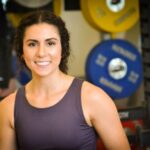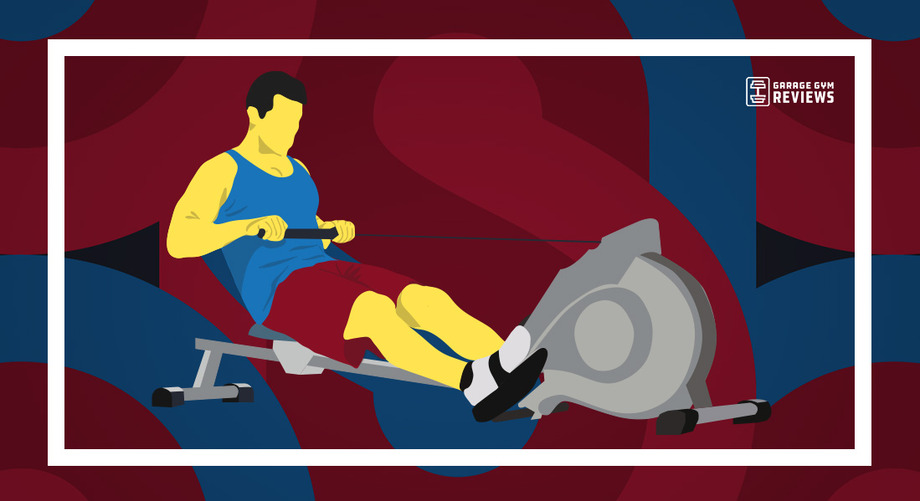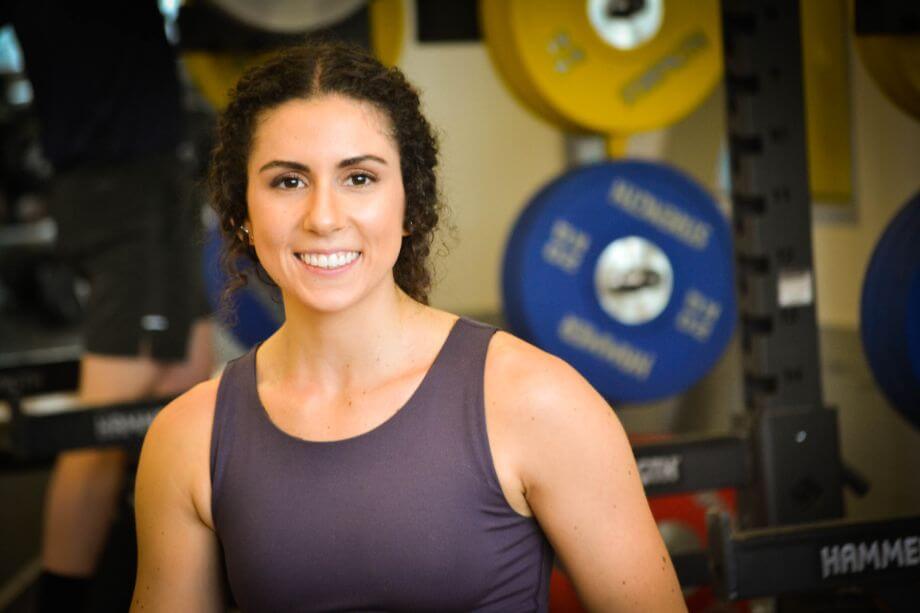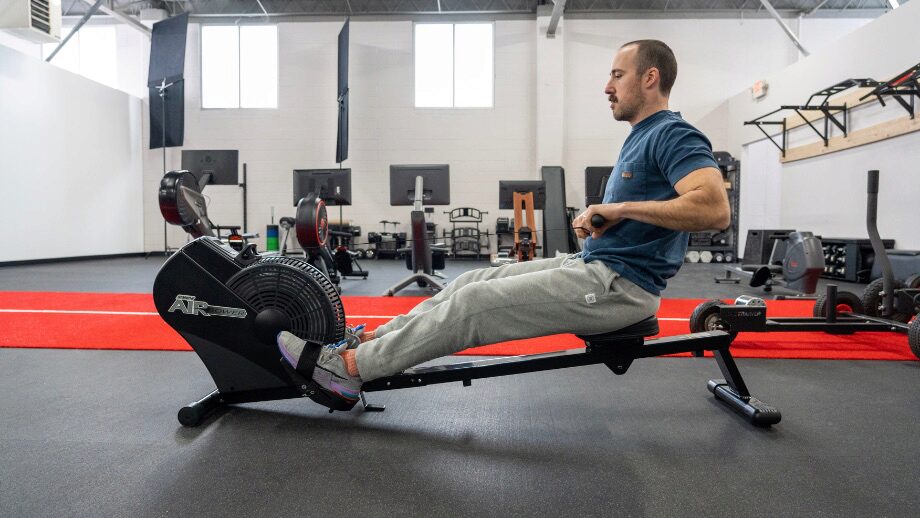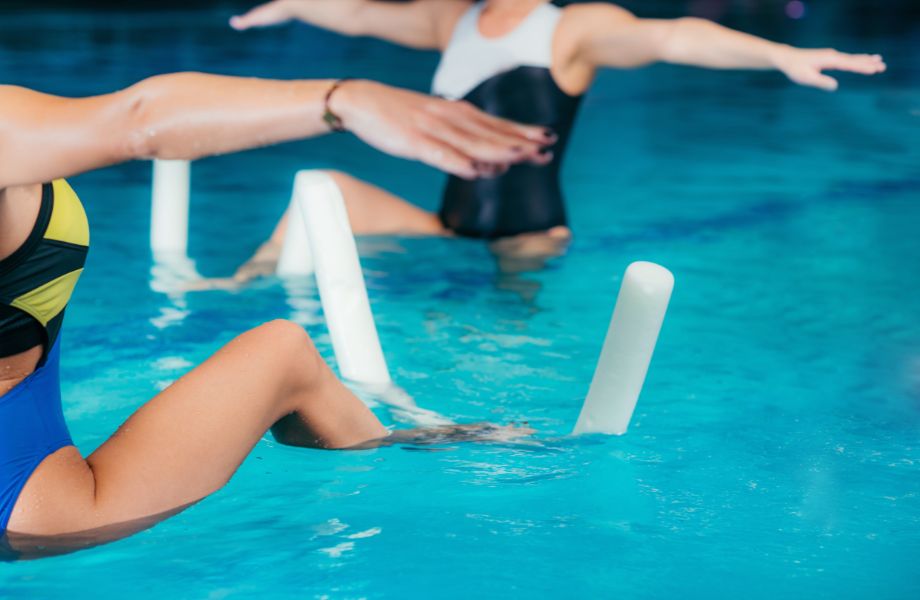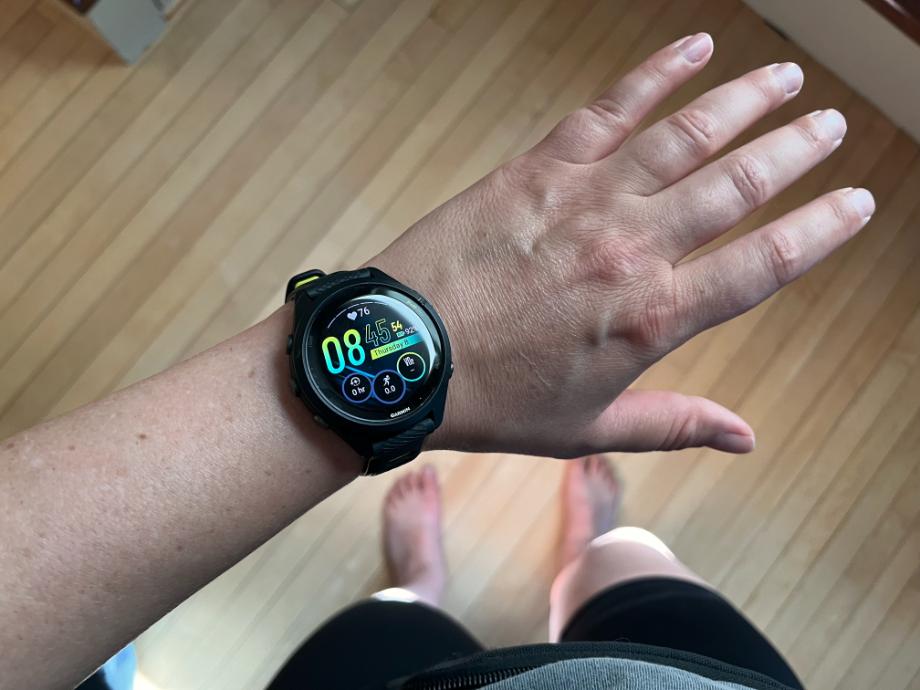Cardio is not typically thought of as muscle-building exercise—and it shouldn’t be, at least not in comparison to strength training. But certain types of cardiovascular exercise have more potential for skeletal muscle impact than others. Rowing is one such cardio workout.
When you row on a machine, your body pushes and pulls against the resistance created by the flywheel. Based on this alone, and the way most people experience muscle fatigue on a rowing machine, it’s not surprising that a lot of people wonder whether rowing is a type of resistance training.
So, does rowing build muscle? Let’s find out.
RELATED Cardio vs Strength Training
Muscles Worked During Rowing
A very widely cited study in The Sport Journal1 reported that the rowing motion recruits 85% of musculature in the human body.
During a rowing stroke, your calves, hamstrings, quads, and glutes are responsible for pushing the seat along the slide rail; your arms, shoulders, and back are responsible for drawing the cable out of the flywheel; your abdominal muscles are responsible for keeping you stabilized and upright.
So, yes, rowing is certifiably a whole-body exercise.
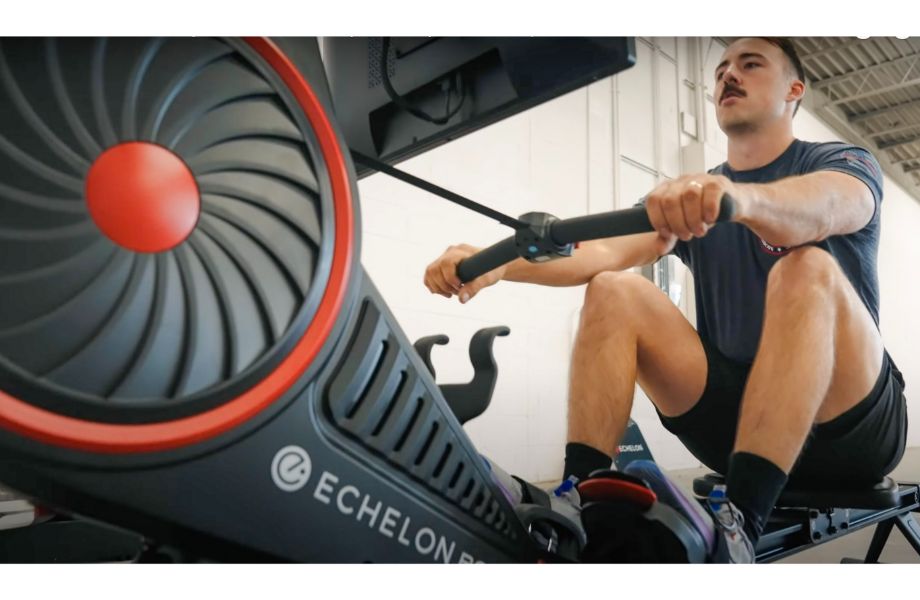
Muscles Worked Rowing Indoors vs Rowing Outdoors
Like most “outdoor vs indoor” exercise debates, there’s generally more potential for muscle activation during outdoor activities than indoor ones, due to the lack of control and varied terrain.
For example, on an indoor rowing machine, you’re completely stable from the starting position to the lockout.
On a real rowboat, however, you’re subject to the undulations of the water, which will force you to engage your core muscles and, really, your entire body in different ways. In this sense, rowing outdoors may be a better muscle-building workout.
On the flipside, rowing on a rowboat or other vessel, like a kayak or stand-up paddle board, doesn’t require use of the legs in the same way rowing on a machine does. When that’s taken into consideration, indoor rowing could be considered the better option.
There’s no real body of scientific evidence directly comparing muscle activation, let alone muscle responses, to the two types of rowing, so it’s best to just choose what you enjoy! Both are good workouts overall.
Read our full guide to indoor vs outdoor rowing.

Can Rowing Build Muscle?
But just because rowing uses muscles, does that mean it’s a muscle-building exercise? The answer isn’t cut-and-dry. Let’s look at some findings that can help us answer this question.
- First things first: Resistance training has been proven time and time again to be the superior form of exercise for hypertrophy, or muscle growth, according to a 2019 systematic review2.
- Research3 on the physiology of rowing shows that the exercise primarily activates type 1 muscle fibers, also known as slow-twitch fibers, but type 2 muscle fibers (fast-twitch) are responsible for the majority of hypertrophy4—and hypertrophy occurs to a greater extent in type 2A fibers5.
- One study6 found that “All aspects of basic fitness” were improved after performing rowing workouts three times per week for eight weeks. The evaluation included the following outcomes: body composition, muscle strength, muscle endurance, muscle reaction, agility, flexibility and explosive power. The results did not include any information specific to hypertrophy, and it’s unclear whether the participants were beginners or trained individuals.
- A study in the journal Frontiers in Sport and Active Living7 followed elite female rowers over seven weeks of competition preparation and found positive muscle adaptations, including hypertrophy; however, the athletes were also taking part in resistance training during the study.
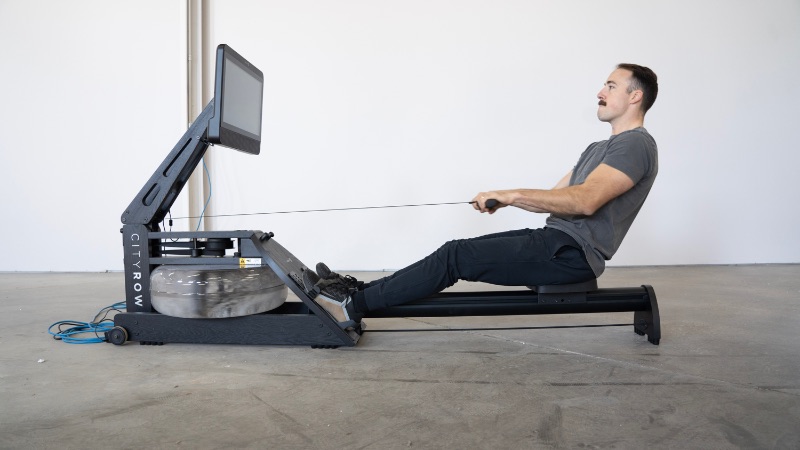
I want to also discuss a 2014 review of studies in the journal Exercise and Sports Science Review8 that looked at several studies from 2005 to 2013. It posits that aerobic exercise is equally effective at building muscle as resistance training.
The review cites several studies that report increases in muscle strength and hypertrophy in people of various populations who completed several weeks of cycling, walking or jogging, kayaking, and step aerobics. In most of the studies, the participants were previously inactive and untrained.
The review goes on to compare two studies on older adults who performed aerobic exercise (comparative study 19, comparative study 210) to one study on individuals who performed resistance training (comparative study 311).
The authors of this review concluded that the aerobic exercise was as effective as the resistance exercise in producing muscle hypertrophy—they state that, collectively, the aerobic groups saw an 8% increase in skeletal muscle volume and that the resistance groups saw an increase of 9%.
However, the aerobic exercise participants had to perform 12 weeks of training, with the last five weeks consisting of four sessions per week at 45 minutes each, maintaining a pulse of 80% maximum heart rate.
The resistant training participants, on the other hand, simply performed three sets of 10 repetitions at 70% of 1 RM, three times per week for 12 weeks.
For this review to conclude that resistance training and aerobic training have the same effect on hypertrophy based on these findings is negligent of the aspects of effort, time requirements, and training capabilities of the individual. It’s clear that resistance training produces a more significant effect on skeletal muscle volume in less time with less effort, at a much lower tax on the cardiovascular system.
The review also mentions that most changes in skeletal muscle due to aerobic training were found in older adults, not younger adults.
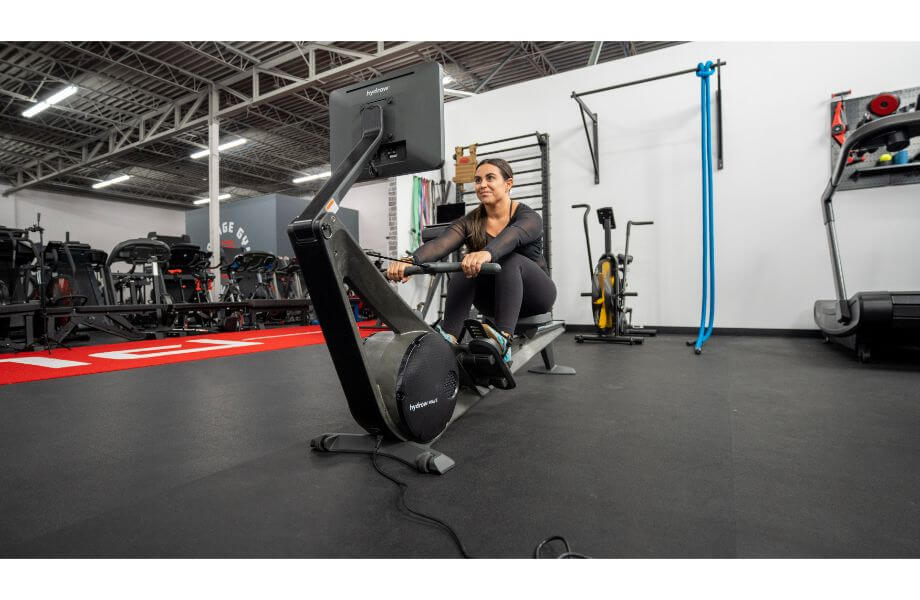
So, does rowing build muscle?
Based on these findings, we can only say it’s possible, and depends on quite a few factors, including:
- Your age
- Your training history
- Current fitness level
- Exercise intensity
- Exercise duration
- Exercise frequency
All that said, let’s not count rowing out! It’s still a great form of exercise and can improve your health in other ways (see benefits of cardio exercise).
The Type Of Rowing Machine Matters
The particular machine you’re rowing on has a big impact on your muscles’ response to the exercise. There are a few different types of rowing machines, each providing different types of resistance.
There are air rowers, on which resistance is unlimited and dictated by the exerciser. On an air rower, the harder you row, the more air you pull into the flywheel, thus the more resistance you create.
Water rowers work similarly, although you can control the maximum resistance by altering the amount of water in the tank. More water equals more resistance potential.
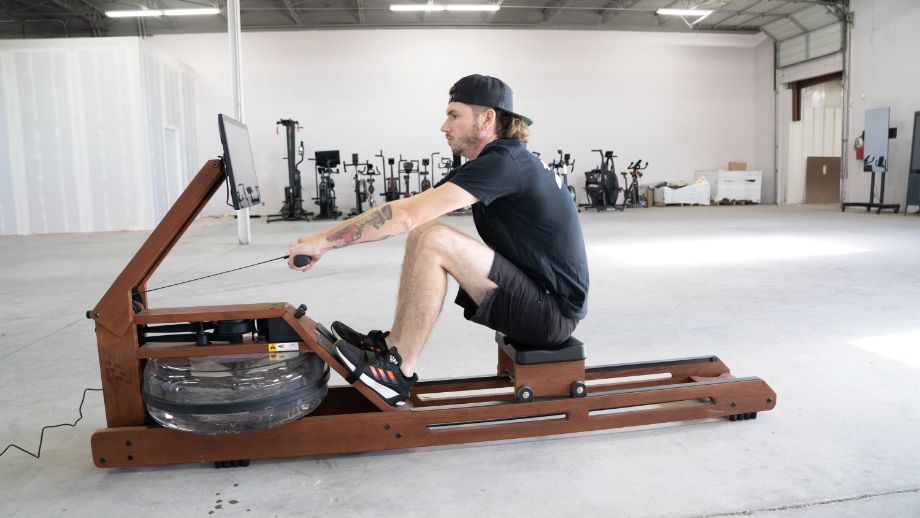
Magnetic rowing machines have predefined resistance levels. Some only have five or six, while higher-end machines have 20 or more levels of resistance.
On budget-friendly rowing machines with few levels of resistance, it’s unlikely you’ll encounter enough of a challenge to your muscles to grow them significantly.
In short: the more resistance potential there is on your machine, the more muscle-building potential.
RELATED: Best Rowing Machines
How to Maximize Rowing Sessions
If you’re wondering how to elicit a more profound muscle response to rowing, or just create a higher-intensity workout that provides a broader stimulus, try these tactics for maximizing your rowing sessions.
Increase The Resistance
Most rowing machines—all of the best ones—have multiple resistance levels or utilize air resistance, which has unlimited resistance. To increase the intensity of your workout and create more resistance for your upper- and lower-body muscles, nudge up the resistance on your indoor rowing machine.
Some rowers, such as the Aviron smart rower, actually have designated strength resistance levels. On the Aviron, for instance, levels one through 10 are for cardio and levels 11 through 16 are for strength.
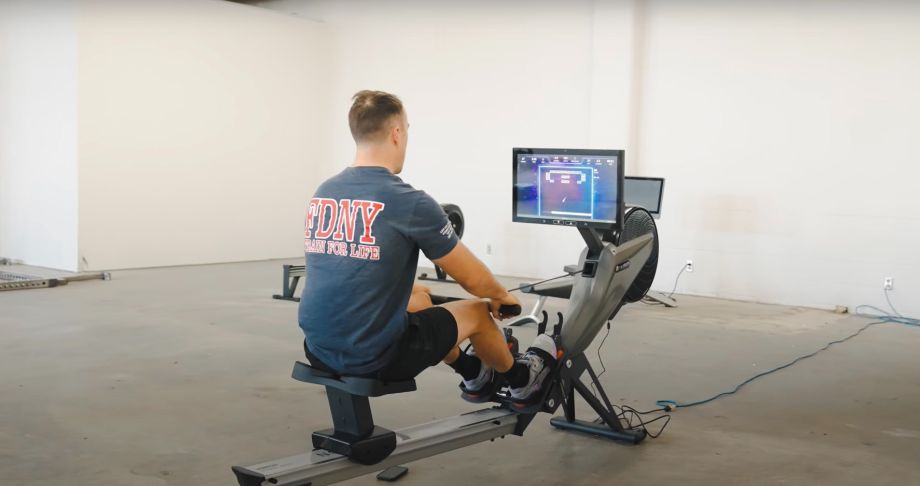
Perform Sprints
High-intensity cardio outputs such as sprinting are thought to build muscle, while long-duration training is thought to inhibit muscle growth.
For instance, in one study in the International Journal of Exercise Science12, 12 participants performed interval run workouts three times per week for 10 weeks. At the end of the study, all participants showed an increase in muscle fibers in the quadriceps compared to the control group. (Keep in mind that this study only applies to running sprints, not rowing sprints.)
Conversely, another study in the Journal of Physical Therapy Science13, the muscle fibers in 30 amateur runners showed elevated markers of muscle damage after running a 10K, half-marathon, or full marathon. The markers remained elevated for three days post-run. (Again, we can’t extrapolate these findings to rowing, but it’s safe to assume that long-duration exercise in general has potential to inhibit muscle growth.)
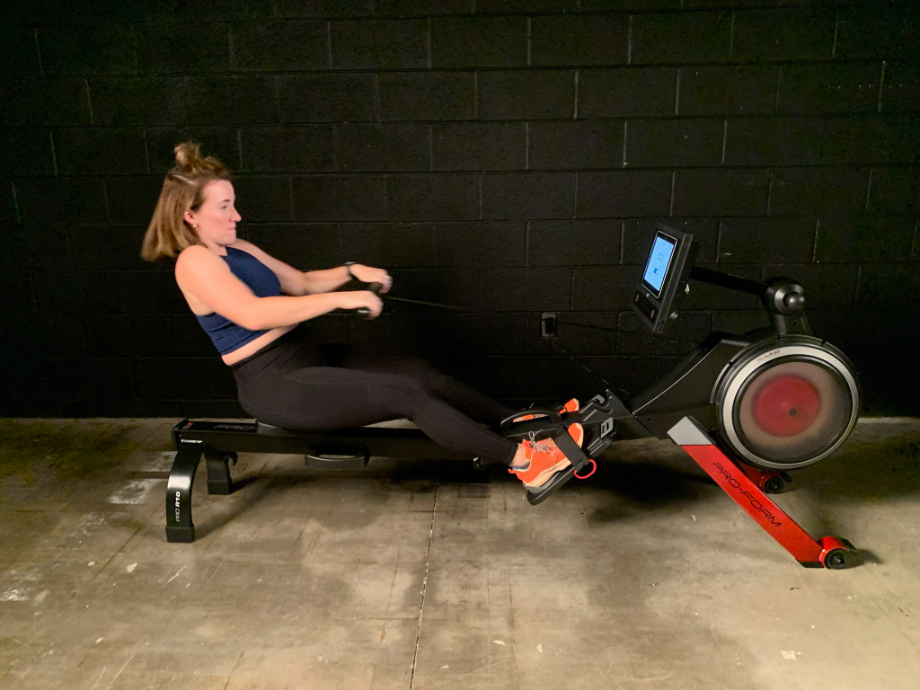
Add In Strength Intervals
Interval training isn’t reserved solely for HIIT workouts. You can combine rowing and strength training into one workout for a session that improves both cardiovascular endurance and contributes to muscle growth.
For example, you could row at max effort for 30 seconds and follow with a set of weighted lunges to near-failure. Or, you could row for 10 minutes as a dynamic warm-up to a strength training workout and sandwich it with another 10-minute session at the end.
Use Your Rower Creatively
Did you know that you can use a rowing machine for more than just rowing? By getting creative with your rower, you can perform a variety of muscle-building exercises, such as plank-to-pike, plank-to-crunch, and sliding lateral lunges.
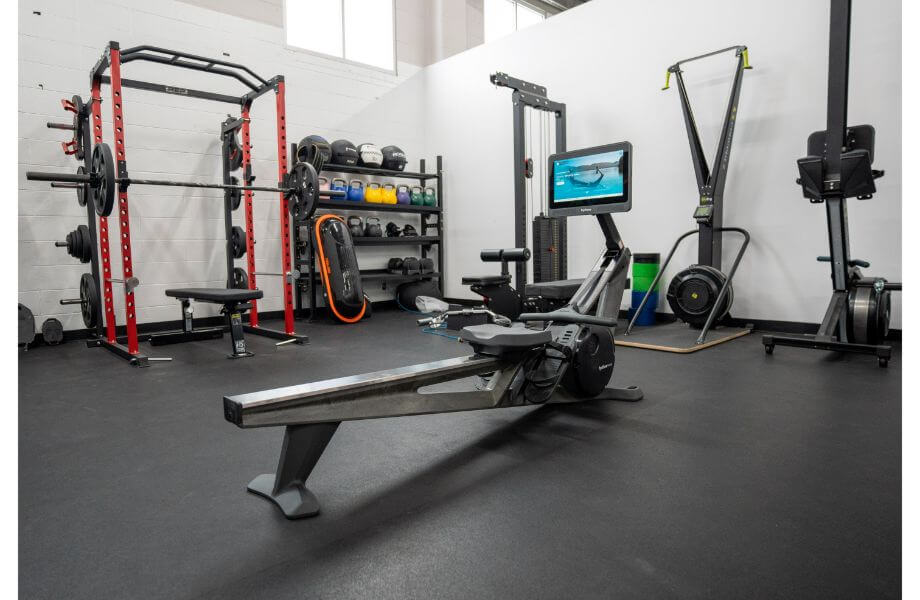
Rowing and Strength Workout
This rowing machine workout combines high-intensity rowing with upper-body and lower-body strength moves, providing a full-body workout that will torch all your muscle groups and fire up your cardiovascular system.
Total time: 30 minutes
Equipment needed: Dumbbells, kettlebell, rowing erg
Every five minutes for 30 minutes (6 rounds), complete one round of the following:
- 1 minute rowing at 80% effort at medium-to-high resistance
- 15 dumbbell deadlifts
- 10 goblet squats
- 5 push-ups (or push-up variation)
- 5 dumbbell shoulder press
- Rest the remainder of the five minutes
Trainer tip: For maximum efficiency and muscle-building potential, make sure to squeeze your quadriceps at the finish of each rowing stroke.
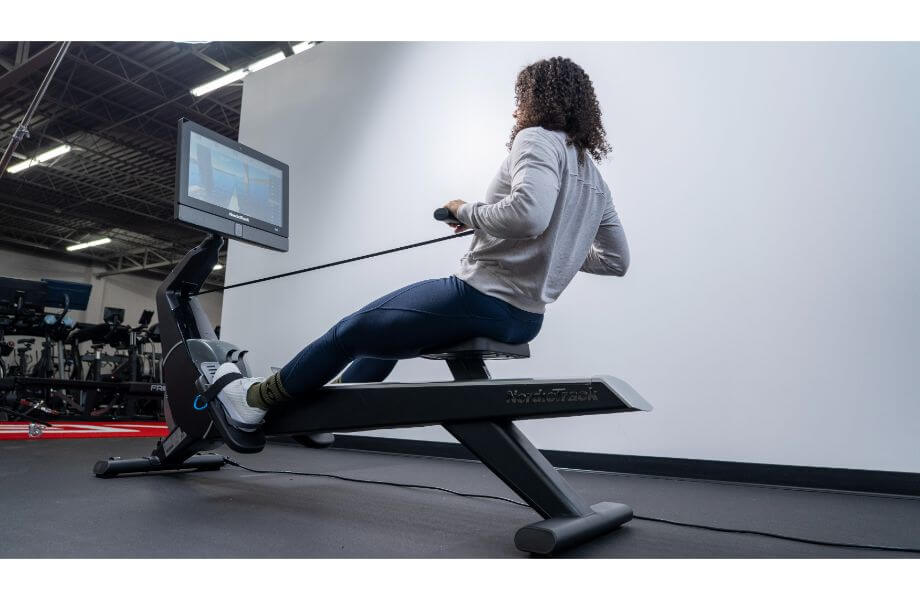
See more rowing workouts.
Final Thoughts: Does Rowing Build Muscle?
Rowing ergs are great cardio machines that can help you reach a variety of fitness goals, including increased endurance, weight loss, and yes, some muscle growth—depending on your training history, fitness level, your age, and how you’re using the rower.
Rowing works the entire body and is a low-impact option to get your heart rate up. But the bottom line is that if you’re looking to build muscle in heaps and bounds, weight training is the way to go.
- Rowing is not the best way to build muscle
- Beginners and older adults are more likely to see increases in muscle mass from rowing than experienced exercisers
- By rowing in conjunction with strength exercises, you can increase muscle-building potential
Q&A: Does Rowing Build Muscle?
To wrap up, let’s look at some FAQs about rowing and muscle growth.
What muscles does rowing work?
Exercising on a rowing machine works almost every muscle in your body, including your leg muscles (quads, hamstrings, calves, glutes, and anterior muscles along your shins), shoulder muscles (deltoids), back muscles (including lats, rhomboids, and others in the upper back and lower back), abdominal muscles, and arms (triceps, biceps, forearms). In short, rowing is a whole-body workout.
Is rowing strength exercise?
No, rowing isn’t generally considered a form of strength training. First and foremost, rowing increases cardiovascular capacity. To build strength and improve your overall fitness level, it’s best to include some dedicated strength training with rowing or other forms of cardio.
Can you gain muscle mass from rowing?
Rowing is primarily a form of aerobic exercise, so while you won’t gain as much muscle from rowing as you would from weight training—that’s just physiology—rowing does engage all of the major muscle groups and performing a rowing stroke does require work against resistance. So, theoretically, yes, rowing can help you build some muscle mass. However, this probably isn’t true for people who have a long training history that includes resistance training.
References
- Academy USS. Relationships among muscle characteristics and rowing performance in collegiate crew members. The Sport Journal. 2022 [cited 2023 Feb 10].
- Krzysztofik M, Wilk M, Wojdała G, Gołaś A. Maximizing Muscle Hypertrophy: A Systematic Review of Advanced Resistance Training Techniques and Methods. Int J Environ Res Public Health. 2019;16(24):4897. Published 2019 Dec 4. doi:10.3390/ijerph16244897
- Volianitis S, Yoshiga CC, Secher NH. The physiology of rowing with perspective on training and health. Eur J Appl Physiol. 2020;120(9):1943-1963. doi:10.1007/s00421-020-04429-y
- Plotkin DL, Roberts MD, Haun CT, Schoenfeld BJ. Muscle Fiber Type Transitions with Exercise Training: Shifting Perspectives. Sports (Basel). 2021;9(9):127. Published 2021 Sep 10. doi:10.3390/sports9090127
- Muscle hypertrophy – an overview | sciencedirect topics.
- Kang SR, Yu CH, Han KS, Kwon TK. Comparative analysis of basal physical fitness and muscle function in relation to muscle balance pattern using rowing machines. Biomed Mater Eng. 2014;24(6):2425-2435. doi:10.3233/BME-141056
- van der Zwaard S, Koppens TFP, Weide G, et al. Training-Induced Muscle Adaptations During Competitive Preparation in Elite Female Rowers. Front Sports Act Living. 2021;3:781942. Published 2021 Dec 8. doi:10.3389/fspor.2021.781942
- Konopka AR, Harber MP. Skeletal muscle hypertrophy after aerobic exercise training. Exerc Sport Sci Rev. 2014;42(2):53-61. doi:10.1249/JES.0000000000000007
- Harber MP, Konopka AR, Douglass MD, et al. Aerobic exercise training improves whole muscle and single myofiber size and function in older women. Am J Physiol Regul Integr Comp Physiol. 2009;297(5):R1452-R1459. doi:10.1152/ajpregu.00354.2009
- Harber MP, Konopka AR, Undem MK, et al. Aerobic exercise training induces skeletal muscle hypertrophy and age-dependent adaptations in myofiber function in young and older men. J Appl Physiol (1985). 2012;113(9):1495-1504. doi:10.1152/japplphysiol.00786.2012
- Trappe TA, Carroll CC, Dickinson JM, et al. Influence of acetaminophen and ibuprofen on skeletal muscle adaptations to resistance exercise in older adults. Am J Physiol Regul Integr Comp Physiol. 2011;300(3):R655-R662. doi:10.1152/ajpregu.00611.2010
- Estes RR, Malinowski A, Piacentini M, et al. The Effect of High Intensity Interval Run Training on Cross-sectional Area of the Vastus Lateralis in Untrained College Students. Int J Exerc Sci. 2017;10(1):137-145. Published 2017 Jan 1.
13. Ryu JH, Paik IY, Woo JH, Shin KO, Cho SY, Roh HT. Impact of different running distances on muscle and lymphocyte DNA damage in amateur marathon runners. J Phys Ther Sci. 2016;28(2):450-455. doi:10.1589/jpts.28.450

